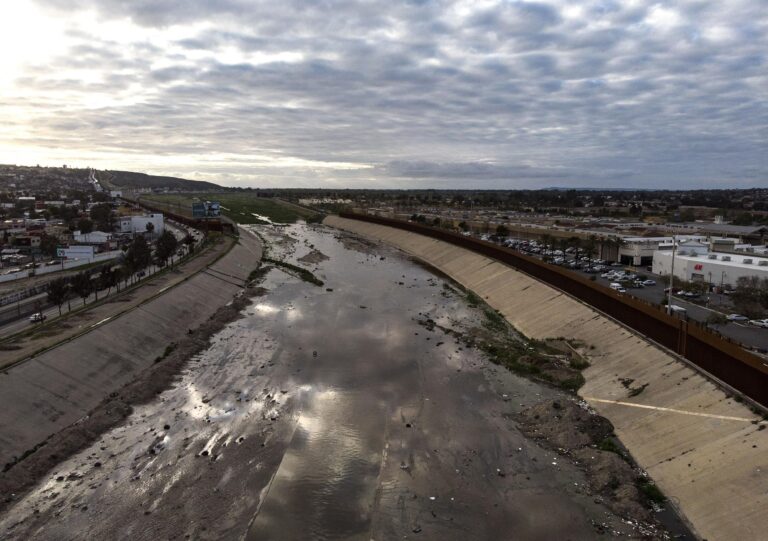San Diego officials are raising urgent alarms over the ongoing flow of untreated sewage from Mexico into the United States, calling for immediate action to halt the contamination. The cross-border pollution has sparked health and environmental concerns, prompting local politicians to demand stronger enforcement and infrastructure solutions. As communities along the border grapple with the impact of this persistent issue, the call to stop sewage discharge underscores the complex challenges of managing shared waterways between neighboring countries.
Sewage Contamination in Border Waters Raises Public Health Concerns
Cross-border sewage contamination is becoming a critical issue impacting the health and safety of residents along the US-Mexico border. Raw sewage from Tijuana is frequently flowing into the Tijuana River, which then crosses into San Diego’s watershed, causing severe environmental damage and public health risks. Local officials are raising alarms about the presence of harmful bacteria and toxins in the water that threaten not only marine life but also the wellbeing of communities relying on these water sources for recreation and daily use.
Public health experts warn that exposure to contaminated water increases the risk of infections, respiratory illnesses, and gastrointestinal diseases. Efforts to mitigate the problem face challenges including aging infrastructure, insufficient funding, and cross-national coordination difficulties. Key demand points include:
- Improved wastewater treatment plants on both sides of the border.
- Investment in sanitation infrastructure to prevent leaks and overflows.
- Binational collaboration to enforce water quality standards and emergency responses.
| Issue | Impact | Proposed Solution |
|---|---|---|
| Sewage overflow | Contaminated rivers and beaches | Upgrade treatment facilities |
| Cross-border pollution | Public health alerts | Joint monitoring programs |
| Infrastructure gaps | Frequent spills | Increased funding and policy support |
San Diego Officials Demand Urgent Action from Mexican Authorities
San Diego officials have intensified calls for immediate intervention amid growing environmental and health concerns stemming from the continuous flow of untreated sewage crossing from Mexico into U.S. waters. Local leaders emphasize the critical need for collaborative binational efforts, urging Mexican authorities to address and rectify the persistent infrastructure failures responsible for this transboundary pollution.
The municipal government outlined several priority actions during a recent press briefing:
- Implementing enhanced wastewater treatment protocols in affected border regions
- Increasing transparency and data sharing to track contamination levels
- Allocating emergency funds to reinforce critical sewage infrastructure
- Strengthening diplomatic channels to expedite cross-border environmental cooperation
| Issue | Current Status | Recommended Action |
|---|---|---|
| Wastewater Overflow | Frequent during rain events | Upgrade drainage systems |
| Water Quality | Substandard and unsafe | Regular monitoring & reporting |
| Cross-Border Communication | Limited and irregular | Establish permanent task force |
Environmental Impact of Cross-Border Waste Pollution Explored
The persistent sewage contamination flowing from Mexico into the U.S. has created extensive environmental and public health concerns, particularly in coastal regions such as San Diego. Local ecosystems bear the brunt of this cross-border pollution, with hazardous pollutants leaching into water bodies causing damage to marine life and disrupting biodiversity. Thousands of gallons of untreated sewage entering the Pacific Ocean daily have led to beach closures, posing a direct threat to both wildlife habitats and the recreational use of these natural resources by communities on both sides of the border.
Efforts to address this issue highlight several critical challenges and solutions:
- Shared responsibility: Cooperation between U.S. and Mexican authorities is essential to develop and maintain sustainable waste management infrastructure.
- Enhanced monitoring: Implementation of real-time water quality tracking to promptly identify and respond to pollution events.
- Investment in treatment plants: Funding and upgrading modern sewage treatment facilities to prevent raw discharge into transboundary waters.
- Community engagement: Increased public awareness campaigns to underscore the environmental and health impacts of sewage pollution.
| Impact Area | Effect | Proposed Action |
|---|---|---|
| Marine Wildlife | Habitat degradation & species decline | Pollution control & habitat restoration |
| Public Health | Increased risk of waterborne diseases | Improved sewage treatment & water quality monitoring |
| Tourism Economy | Beach closures & economic losses | Quick response to contamination & public communication |
Policy Recommendations to Prevent Future Sewage Spillages
Addressing the persistent issue of transborder sewage spillages requires a multi-layered approach involving enhanced infrastructure investment, binational cooperation, and stringent regulatory oversight. First, upgrading aging sewage treatment plants and pipelines, especially in affected border regions, is essential to prevent leaks and system overflows. Such upgrades should incorporate modern technology designed to handle increased capacity and resist environmental stressors. Additionally, establishing a joint US-Mexico task force dedicated exclusively to real-time monitoring and rapid response can greatly reduce the risk of large-scale contamination events.
Equally important is the implementation of strict environmental accountability measures for areas prone to sewage discharge. These should include:
- Regular cross-border inspections to ensure compliance with sanitation standards
- Transparent public reporting mechanisms to keep communities informed
- Investment in green infrastructure to naturally filter runoff before it reaches waterways
- Incentives for wastewater reuse to reduce disposal volumes
| Policy | Primary Goal | Expected Outcome |
|---|---|---|
| Binational Sewage Task Force | Coordinated Monitoring | Faster Spill Response |
| Infrastructure Modernization | System Upgrade | Reduced Leakages |
| Public Transparency Laws | Community Awareness | Increased accountability |
| Green Infrastructure | Natural Filtration | Improved Water Quality |
In Retrospect
As the ongoing contamination from cross-border sewage continues to impact communities and ecosystems in both Mexico and the United States, calls for urgent and sustained action grow louder. San Diego officials emphasize that addressing the issue is not only a matter of public health but also a critical step toward environmental stewardship and binational cooperation. Moving forward, effective solutions will require collaboration, investment, and accountability from both sides of the border to ensure clean water and safe living conditions for all residents. The spotlight remains on policymakers to translate these demands into concrete measures before the environmental and humanitarian costs escalate further.







